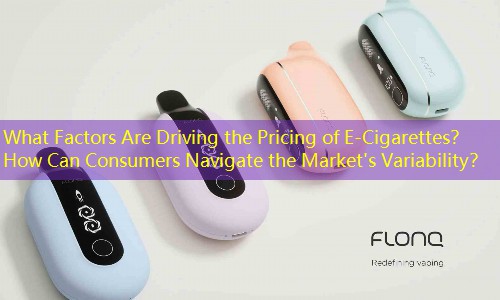Understanding the Emerging Trends in E-Cigarette Pricing
In the evolving landscape of vaping products, pricing strategies are significantly shaping consumer choices and brand positioning. Particularly, the e-cigarette sector has seen fluctuations in pricing models, which have been influenced by technological advancements, regulatory changes, and market demand. This detailed analysis delves into numerical aspects of electronic cigarette pricing, highlighting key components that define the current market scenario.
The Average Price Point for E-Cigarettes
One of the most crucial metrics in e-cigarette pricing is the average price point. Currently, the average price of a basic e-cigarette starter kit ranges between $30 to $50. This price point typically includes the device itself along with a few cartridges. For heavier users or those seeking more advanced options, premium kits can exceed $100, pushing the price upward depending on specific features and technological enhancements.
Sales Volume and Price Sensitivity

The relationship between sales volume and pricing can be quite revealing. Studies have shown that a 10% decrease in e-cigarette prices could potentially lead to a 15% increase in sales volume. This price sensitivity is particularly evident among price-conscious consumers and younger demographics, where discretionary spending plays a significant role in purchasing decisions. Manufacturers are thus compelled to balance product quality and pricing effectively to capture a broader market share.
Market Segmentation and Price Variability
Consumer preferences in the vaping industry often dictate market segmentation. High-end e-cigarettes can be priced as high as $200, targeting users who prioritize features such as improved durability, customizable settings, and advanced battery life. Conversely, disposable e-cigarettes generally fall into the range of $5 to $15, catering to casual users or those trying out vaping for the first time. This wide range reflects the diverse nature of consumer demand and influences competitive pricing strategies across different segments.
Consumer Spend on E-Liquids
Another notable financial aspect in the vaping market is consumer expenditure on e-liquids. Typical e-liquid bottles range from $10 to $30 for a 30ml bottle. Enthusiasts often spend upwards of $50 each month solely on e-liquids. E-liquid pricing often fluctuates based on flavor complexity, brand reputation, and nicotine concentration, representing a lucrative area for manufacturers and retailers.
The Role of Brand Loyalty in Pricing
Brand loyalty significantly impacts price tolerance among e-cigarette users. Research indicates that 60% of loyal customers are willing to pay a premium of up to 20% for their preferred brands. This loyalty often stems from consistent quality, flavor variety, and product innovation. Brands that successfully cultivate a loyal following can command higher prices while still maintaining solid sales volumes.
The Influence of Regulation on Pricing Dynamics
Regulatory frameworks also play a pivotal role in shaping e-cigarette pricing. In many regions, taxes levied on vaping products can range from 10% to 40%, directly affecting retail prices. For instance, in states where e-cigarette taxes are higher, average prices could increase, resulting in a shift in consumer behavior and potential downtime in sales for certain brands. Navigating these regulatory challenges is essential for businesses seeking to maintain competitiveness.
Future Pricing Trends and Predictions
Forecasting the future of e-cigarette pricing involves considering multiple factors, including potential shifts in consumer preferences and the introduction of new technologies. Experts predict that prices for e-cigarettes may stabilize or gradually decrease as competition intensifies and technology becomes more cost-effective to produce. Innovations such as refillable cartridges and enhanced battery capacities could also influence long-term pricing trends.
Conclusion
In conclusion, the pricing landscape of e-cigarettes is characterized by a myriad of factors ranging from consumer behavior to regulatory influences. With an average starter kit price between $30-$50 and significant variations based on product types and loyalty, understanding these dynamics is essential for stakeholders in the vaping industry. The ongoing evolution in consumer preferences and regulatory environments will continue to shape pricing strategies, making it imperative for brands to adapt accordingly in the competitive e-cigarette marketplace.








